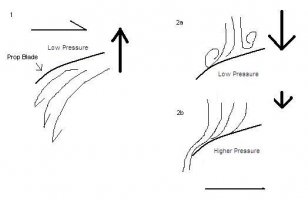A couple of weeks ago, we went out for a nice evening sail after work. We got out into Commencement Bay, put up the sails and killed the engine. It was a really nice evening - about 60 degrees and 10 knots of wind, no chop.
I thought it was perfect until I started hearing this "clunka-clunka" sound coming from down below. I opend up the engine compartment, and thought the noise was coming from my Hurth transmission (the shaft was rotating, and the sound was coming from that area). It really bothered me, so I canceled the sail, and sailed back to my marina on the Thea Foss Waterway (aka City Waterway, aka "Shitty Waterway" - read on). :eek:
To make a long story short, I learned all about the Hurth HBW 50, and talked to a bunch of people who install them. The transmission appeared to be ok (lots of nice, clear red ATF) - so I rented a wetsuit, and went for a swim in the waterway. Good news was, it was not the transmission, nor the cutlass bearing - but rather my zincs. One had fallen off, and the other was so loose that it slid down the shaft, and was about to fall off (thus making the clunka-clunka sound). The sound went back up the shaft, into the engine compartment, etc.
My point is this - those of you with the Hurth HBW 50, and the Universal M25 need to be aware that the transmission is actually a little too small for that engine (running 21 hp at 2000 RPM, supposed to max at 2300 RPM). The guys at the transmission places I spoke to told me that I should not press it above 1700 RPM when crusiing long distances under power.
Has anyone else had problems with their transmission, or have info on this subject? Also - should I be putting my transmission in reverse once under sail? The Hurth guys said yes - any of you know otherwise?
//sse
I thought it was perfect until I started hearing this "clunka-clunka" sound coming from down below. I opend up the engine compartment, and thought the noise was coming from my Hurth transmission (the shaft was rotating, and the sound was coming from that area). It really bothered me, so I canceled the sail, and sailed back to my marina on the Thea Foss Waterway (aka City Waterway, aka "Shitty Waterway" - read on). :eek:
To make a long story short, I learned all about the Hurth HBW 50, and talked to a bunch of people who install them. The transmission appeared to be ok (lots of nice, clear red ATF) - so I rented a wetsuit, and went for a swim in the waterway. Good news was, it was not the transmission, nor the cutlass bearing - but rather my zincs. One had fallen off, and the other was so loose that it slid down the shaft, and was about to fall off (thus making the clunka-clunka sound). The sound went back up the shaft, into the engine compartment, etc.
My point is this - those of you with the Hurth HBW 50, and the Universal M25 need to be aware that the transmission is actually a little too small for that engine (running 21 hp at 2000 RPM, supposed to max at 2300 RPM). The guys at the transmission places I spoke to told me that I should not press it above 1700 RPM when crusiing long distances under power.
Has anyone else had problems with their transmission, or have info on this subject? Also - should I be putting my transmission in reverse once under sail? The Hurth guys said yes - any of you know otherwise?
//sse



